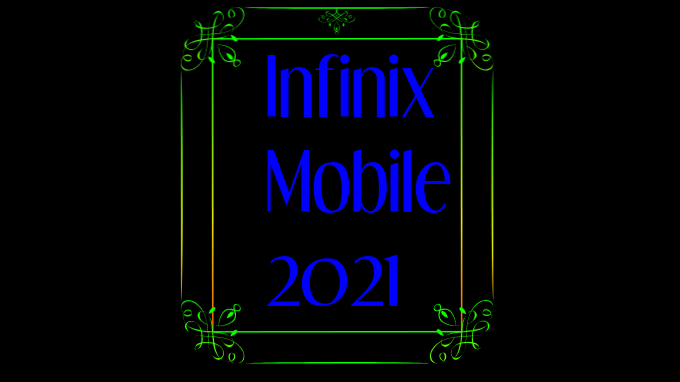Paris eighteen seventy-six. Louis Pastor is one of the greatest scientific minds in Europe and he's turned his attention toward two things. Beer and vengeance. years earlier, he'd unlocked a millennia old secret by proving that yeast in the absence of oxygen is what ferments sugar into alcohol and then he thought he was done with beer until the war,
the Franco Pressian War where France lost its hops growing region of Al Sas Lorraine. For French pride for French beer, he must again delve into the secrets of brewing in order to create what he calls a beer of national revenge. What he discover this time are the specific microorganisms that make beer spoil or go sour and he finds that bringing it to near boiling,
Real History of Beer In English
pasturizing it like with milk will kill these organisms and increase the beer stability and shelf life. Though this discovery will not remain French, it will inaugurate a new era, the age of scientific beer. Thanks so much to Brilliant for helping us ferment this historic tale. When we left off, beer was going global and industrialization was about to turn regional breweries into the massive
beverage corporations we know today. Troops in British India, previously sickened in large numbers by local drinks were now sipping on IPAs brewed in the UK. Viennese style Pilsner was being produced in Mexico and the twin forces of trade and colonialism were bringing European beer to foreign shores and founding some of the largest breweries of the modern era. In , a
Norwegian American opened a brewery in Yokohama which would eventually become Kiran. Seven years later, the Meshi government founded Saporo Brewery and what would become Asahi followed in eighteen eighty-nine. China had an active beer brewing culture for thousands of years but when grains like millet fell out of the diet, brewing shifted to rice. Yet as European powers carved out pieces of the Ching Dynasty in the th century, foreigners began reestablishing
Chinese beer. Poles, Germans, and Czechs started breweries in Hobbin but it was in one particular city that a joint English German concern found success when it founded a brewery in Shingdao in nineteen oh three. Today, China is the world's largest beer consumer and Xingdao is the second most popular brew in China surpassed only by snow beer which traces its origins to a
Brief History of Beer In English
brewery established by Karen in in what was then Japan's Manchurian puppet state but things were brewing back in Europe too. Specifically, Northern Europe. In , a young Danish man named JC Jacobson founded a brewery outside Copenhagen using power and other new industrial technologies to produce Danish Pilsner with his eye on the future he named it after his five year old son Carl thus Carlsberg was born years later it gained some competition when a year old
bought an outdated th century brewery in Amsterdam determined to modernize it he hired a student of Louis Pastor to find and culture new types of bottom fermenting yeast and he christened both the brewery and his beer with his own name Heineken together these rivals kick start the scientific age of brewing. Both Carlsberg and Heineken approached beer like a
research project. Establishing in-house laboratories where scientists experimented with new techniques, equipment, and ingredients. Beer got clearer and more carbonated. Meanwhile, the area that would become Germany was going through its own seismic shift that would have major echoes far across the Atlantic in America. Now, we know we haven't talked much about the United
States in the series. Partially, it's because for thousands of years, it didn't exist. Amazing, I know. But it's also because Well, American beer was just sort of fine. Sure, it was always there and often affecting history. For example, the Mayflower landed at Plymouth Rock because it ran out of beer and taxes on brewers helped fund Washington's Army but America's drink was whiskey
which was made easily from barley and corn lasted longer, was easier to transport and had a higher exchange value with the young countries largest trade partner. Native American tribes. In fact, colonial Americans drank only a third of the beer modern Americans do and much less than their British at the time. In fact, as an apprentice in London, Benjamin Franklin was scandalized
by how much his British colleagues consumed. Until the s, most US beer was produced in the Northeast and consisted of English style ales and porters. Yet America's laser fair economic freedom did make for mediocre brew. While most European countries had high standards for licensing breweries and quality control legislation, none of that existed in the United States.
Beer was a product, not an art. But a revolution was coming. Specifically, the of . A largely failed series of liberal uprisings which convinced the whole generation of young largely middle class Germans to immigrate to the United States and tape their brewing knowledge with them. But when they arrived they found the older German communities on the east coast too crowded.
Especially for brewing. So instead they struck out for the newly founded cities in the Midwest. Where the land was literally free, cereals and hops grew easily. And the cold winters meant ice for lagering beer was abundant. There they founded and expanding lager breweries and brought the German drinking culture of beer gardens with their friendly visible and community oriented
History of Beer In English Extra History
intoxication to America in Swabian immigrant Friedrich Mueller arrived in Milwaukee Wisconsin and purchased an existing brewery to modernize christening it with his Americanized name Miller the next year Joseph Schlitz arrived in the city and married a brewer's widow taking over the business and naming it after himself but then when the great fire of destroyed Chicago torching most of rival breweries, he donated beer to get the city through, earning his brew the nickname,
the beer that made Milwaukee famous and then there was Frederick Papst who took ownership of his father-in-law's brewery and decided as a branding exercise to tie a blue ribbon around the bottles of the beer, he'd named for his father-in-law, Philip Best. That's right, best beer with a blue ribbon around it and though Pap's Blue Ribbon had never actually won any awards. Well, he just never corrected anyone who assumed it had. Miller, Schlitz, and Papst collectively no as the beer bears became hugely wealthy building enormous mansions and funneling their money into
everything from resorts to some of the country's first amusement parks but while they competed they also banded together during the Civil War when Lincoln rolled out new taxes to pay for the conflict they convinced him that clean well made and healthy German lager should pay only % of the taxes that other beers did giving them a major competitive advantage but even so all of them were about to be userped Adolphus Bush exited the Civil both as a corporal in the Union Army
and newly married to the daughter of Saint Louis based brewery owner Emberhardt Anheiser. During the war where , Germans served in the US Army, he must have observed the popularity of lager beer amongst the ranks. When he bought his way into the Anheiser Bush Brewery,
he used every modern technology he could find. From refrigeration to break reliance on winter ice and produced Pilsner year round to pasteurization that killed the microbes and beer to industrial bottling machines to refrigerated rail cars that shipped his product countrywide. He also pioneered branding and marketing, sending branded art and goods like ashtrays to bars and convincing them to stock only his signature beer.
A beer inspired by the brews from the Czech Town of Budweiser or as we of course know it, Budweiser. By , Bush was the king of beers in the Midwest and America usurfed Germany as the largest beer producer in the world. Anheuser Bush was well on its way to becoming the planet's largest brewing company. Yet, trouble was coming. See for decades,
concerns had been rising about America's problem and beer which often flew under the radar landed in the crosshairs because the largely white protestant long established families who tended to favor temperance often didn't like what they thought of as immigrant drinks the Irish with their whiskey Italians with their wine and especially after World War one these German tycoons showing off their wealth gained from an empire of drunkenness and that wave of anti-immigrant
panic help sweep prohibition into law in ironically though prohibition ultimately proved good for the big breweries. See, they weathered the storm by producing soft drinks while smaller brewers perished and by killing the competition, it left the macro breweries in a position of dominance that's only changed in the last few decades and that's how we got to the world we know today.
How beer went from something made in neolithic baskets to a massive product shipped and consumed around the world. But before last call, let's have one final toast across time. Come on, everybody in the past and present. Whether you're a beer bearing, peasant ale wife, worshiper,
colonial minute man, Inca Emperor, Apache Warrior, German monk, pyramid builder or scientist. Let's all raise a glass. Here's to the drink that lubricated the gears of human history. Beer. Cheers everyone. You know before we did this series, I had no idea the amount of science that goes into brewing nowadays. Which got me thinking may be I should finally graduate from simply doing my
own research in my own lab to taking that chemical reaction or computational biology course I've been thinking about over on Brilliant. You know, one of the things we really love about our EC community is that a lot of us are lifelong learners. People who are super passionate about leveling up our knowledge but also like doing it on their own schedule which is why we think
Brilliant, the interactive learning environment focusing on science, technology, engineering, and mathematics, you know, the whole stem set is perfect for learning at your own pace. Replacing traditional lectures with hands-on interactive lessons complete with visual examples and a storytelling approach that is super engaging. Case in point, Jeff has been brushing up on his fundamental having already worked his way through some foundational computer science
courses and is about to jump into some statistics and probability. Whereas I've been really enjoying channeling my inner Mr. Spock and strengthening my analytic muscles with their multi-part courses on logic and deduction. Because I want to be able to role play my next D and D character as more of a homes than a Watson if you catch my drift. So if you're a curious learner,
professional or inexperienced. You can find out more about brilliant and buff your brain by going to brilliant. org slash extra credits and signing up for free. And the first people that go to that link will also get % off an annual premium subscription which added bonus also helps out our channel in the process I mean if that's not a no brainer I don't know what is the biggest EC thanks to Ahmed Ziad Turk Alicia Bramble Angelo Valenciana Casey Musta Dominic Valenciana Joseph Blaine Kyle Mergatroid and Oreos One for being fantastic legendary patrons

.jpg)













0 Comments
Thanks For Makki Tv Website Visit Please Contect My Whatsapp Number For Updates 03155017246